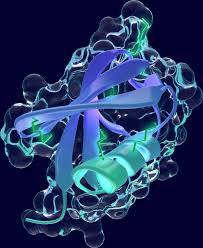Stanford chemists have made a breakthrough in understanding how proteins are degraded within cells, leading to promising new possibilities for therapeutic interventions. By targeting proteins that cause or contribute to diseases, researchers have developed strategies to prevent these proteins from functioning properly and causing harm. One such strategy involves sending these problematic proteins to cellular protein degradation machinery, such as lysosomes, which act like a wood chipper for proteins.
Published in Science on October 20, a new study conducted by Stanford chemists has shed light on the pathway that leads proteins to the lysosome for degradation. This discovery opens up new avenues for developing therapeutics for age-related disorders, autoimmune diseases, and treatment-resistant cancers. It also has the potential to improve treatments for lysosomal storage disorders, which primarily affect infants and children and can have serious consequences.
Understanding the process by which proteins are shuttled to lysosomes for breakdown allows scientists to harness the natural mechanism within cells to eliminate harmful proteins. Carolyn Bertozzi, a professor at Stanford, explains that this research offers valuable insights into a previously opaque intracellular process and has the potential to revolutionize drug discovery.
Proteins, while essential for normal bodily functions, can also be detrimental when they go rogue. In conditions like cancer, proteins can contribute to tumor growth, cause diseases like Alzheimer’s, or lead to cardiovascular problems. Traditionally, drugs have been designed to block the active sites of proteins and prevent them from interacting with cells. However, researchers have since developed other strategies, such as proteolysis targeting chimeras (PROTACs), to target proteins that are already inside cells and send them for degradation in lysosomes.
PROTACs have shown promise in clinical trials for cancer treatment. However, they can only target proteins that are already within the cell, limiting their effectiveness to 60% of proteins. In 2020, Stanford researchers pioneered a new approach called lysosome targeting chimeras (LYTACs) that can identify and mark proteins located outside the cell or on the cell membrane for degradation. This breakthrough led to a new class of research and therapeutics. Yet, the exact mechanism of action and factors influencing the success of LYTACs remained unclear.
The recent study, led by Green Ahn, a former Stanford graduate student now working as a postdoctoral fellow, aimed to uncover the cellular components that influence the effectiveness of LYTACs in protein degradation. Through genetic screening, Ahn and the research team discovered a correlation between the level of neddylated cullin 3 (CUL3) protein, involved in cellular protein breakdown, and the efficacy of LYTACs. The presence of more neddylated CUL3 resulted in greater LYTAC effectiveness, although the precise connection between the two remains unknown.
Measuring the level of neddylated CUL3 could potentially serve as a diagnostic test to determine which patients are more likely to respond to LYTAC therapy. This unexpected finding opens up possibilities for personalized treatment approaches based on individual patient characteristics.
The study also identified proteins that hinder the function of LYTACs. LYTACs bind to specific receptors on the cell surface to transport targeted proteins for degradation in lysosomes. However, the researchers observed that proteins with mannose 6-phosphates (M6Ps), which decorate proteins destined for lysosomes, occupied these receptors, making it impossible for LYTACs to bind. By disrupting M6P biosynthesis, researchers observed an increased number of unoccupied receptors on the cell surface, creating an opportunity for LYTACs to hijack these receptors and enhance their effectiveness.
In addition to advancing LYTACs as therapeutics, this research has implications for the treatment of lysosome shortage disorders, which result from a lack of enzymes in lysosomes. These genetic conditions can lead to the accumulation of harmful substances and cause damage to various organs. Current treatment options, such as enzyme replacement therapy, rely on similar pathways as LYTACs. Understanding the mechanisms underlying LYTAC function could lead to more effective delivery of therapeutic enzymes in lysosome shortage disorders.
The impact of this discovery is likened to the breakthrough understanding of the drug thalidomide’s mechanism of action. Originally prescribed to pregnant women for morning sickness but later withdrawn from the market due to severe birth defects, thalidomide was later found to be effective in treating multiple myeloma. Similarly, the understanding of how thalidomide degrades proteins contributed significantly to the development of PROTAC research. Bertozzi describes LYTACs as being at a similar stage of development, where new insights into human biology are being uncovered.
Overall, the findings from this study provide crucial insights into the process of protein degradation within cells. This discovery not only paves the way for the development of new therapeutics for various diseases but also sheds light on previously unknown aspects of human biology. It represents a significant step forward in the field of drug discovery and holds promise for personalized medicine approaches in the future.
*Note:
1. Source: Coherent Market Insights, Public sources, Desk research
2. We have leveraged AI tools to mine information and compile it




